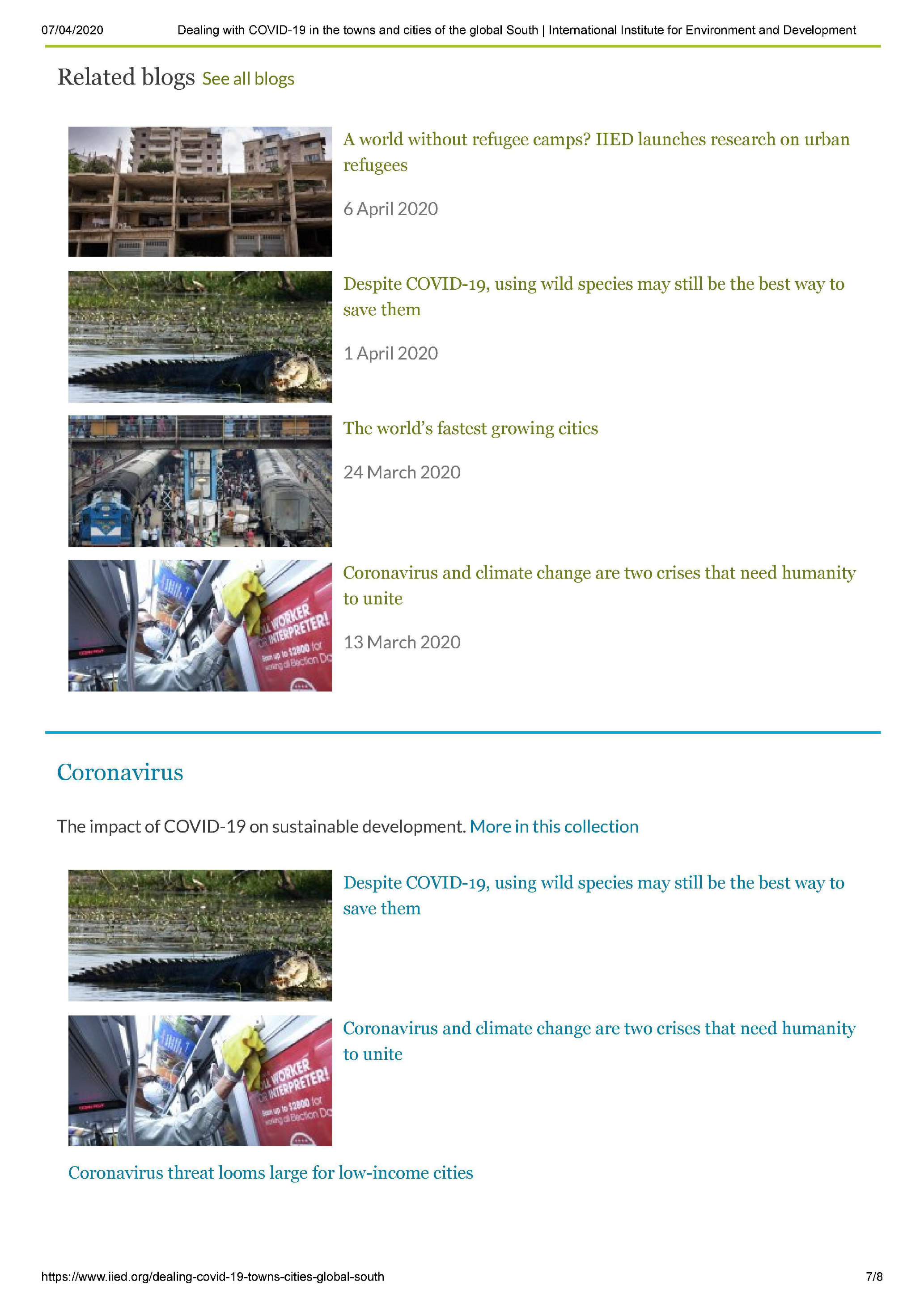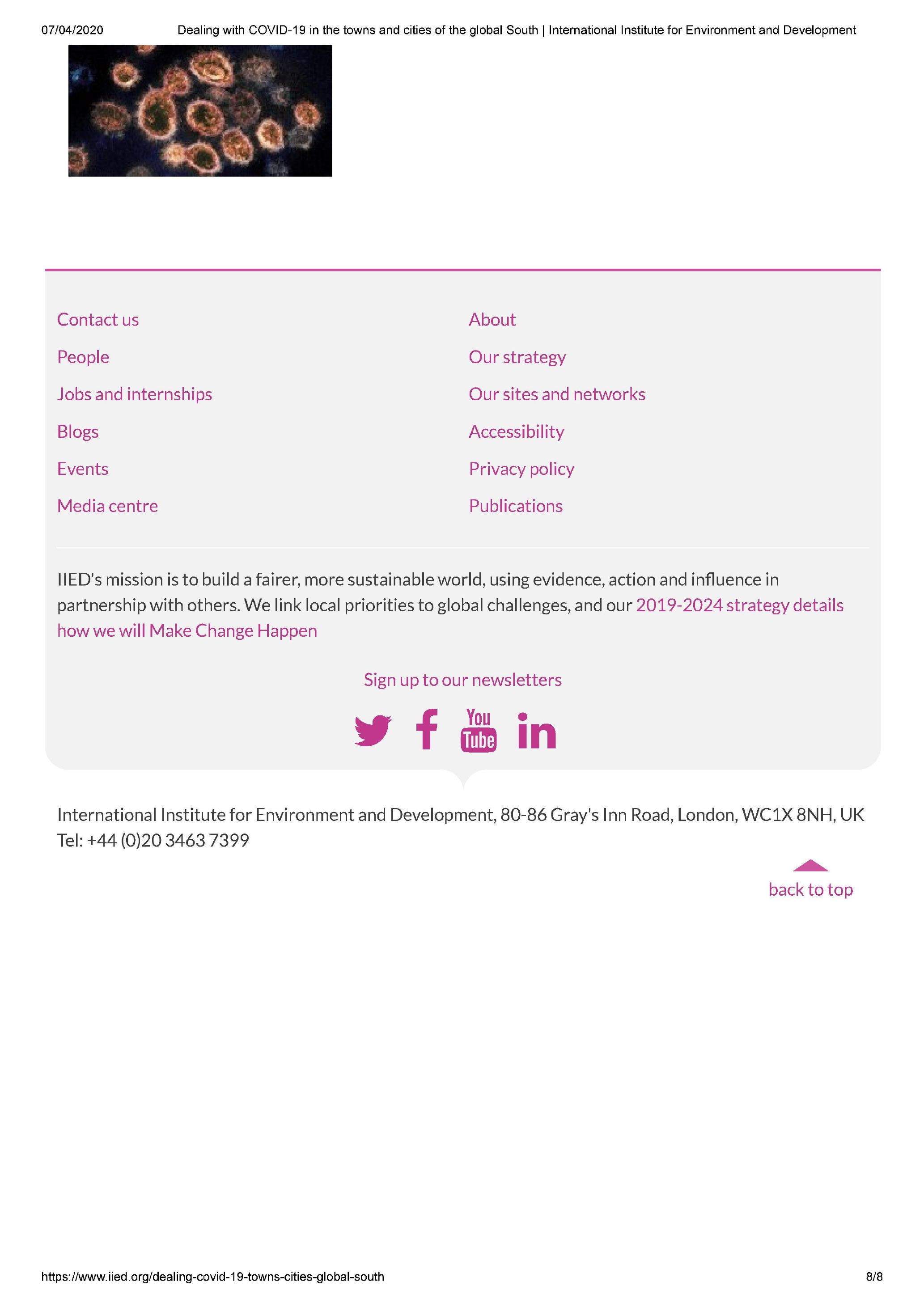
07/04/2020
Dealing with COVID-19 in the towns and cities of the global South | International Institute for Environment and Development
strategies to tackle it extremely difficult to implement.
Despite these challenges, this is an opportunity to forge new partnerships between agencies that - if
they work together - can reach the populations in need.
High residential densities, with limited services
In informal settlements across the global South it is common for families of 2-5 people to live ina
single room shack or tenement block of around 3 metres by 4 metres. Shacks are often adjacent to
each other, with a single water tap and pit latrine shared between 5-10 families.
There is very limited public space for roads and pathways. The average population density of ‘slums’
in Nairobi, Kenya, was 28,200 people per square kilometre in 2009, a 51% increase in just ten years.
One large high-density informal settlement (Mukuru) has a population density of 108,128 people per
square kilometre (PDF). This makes it likely that the virus will spread rapidly.
Water supplies may be limited both because of the cost and because there is no access to piped
water within the dwelling or even the plot. In sub-Saharan Africa, access in urban areas to piped
water on the premises declined between 1990 and 2015.
And even when supplies are available, they are frequently intermittent in lower-income areas, and
they are frequently not affordable in the quantities required for good health. The World Health
Organization recommends 50 litres per person per day in non-emergency situations. This lack of
water makes it hard for frequent hand washing to take place.
Incomes are very low and savings non-existent
Most of the one billion people living in informal settlements have very little savings and nearly all
work in the informal economy, often as employees in informal enterprises or as micro-entrepreneurs
such as those selling vegetables. A small proportion have low paid jobs in the formal economy such as
cleaners, factory workers and guards.
Some of these households will be able to secure food from their extended family networks in rural
areas but many will not. Increased use of food from rural areas will require more movement and
potentially spread the disease.
It is extremely difficult for these workers to self-isolate; there is every likelihood they will carry on
working.
Many occupations are high risk
https:/Avww.iied.org/dealing-covid-19-towns-cities-global-south
2/8
















